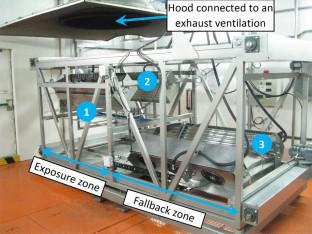Flame Spread Experiments on a Horizontal Preheated Cable Layer
Abstract
Electrical cables are one of the main fire hazards in nuclear power plants (NPPs) and in many other industrial sectors. To assess the potential damages of the cable fires, models are required to forecast the fire spread over multiple cable trays and the resulting heat release rate. A new test device, called CISCCO, was developed to conduct flame spread experiments on a preheated horizontal cable layer to support the development and validation of the models. The characteristics of the CISCCO device are first presented before the description of four series of experiments that first investigated the temperature dependence of the flame spread velocity. The series involved a cable layer composed of either a polyvinyl chloride (PVC)-based cable, named PVC cable or a halogen free flame retardant (HFFR) poly(ethylene–vinyl acetate)/polyethylene-based cable, labelled HFFR cable. Temperature measurements performed in the solid phase (cable outer sheath) and in the gas phase (above the cable layer) allowed to assess the preheated cable layer temperature and the flame spread velocity. A first attempt of flame heat flux measurements was also conducted in this work. All series highlighted a temperature dependence of the flame spread velocity according to experimental power laws. The flame spread velocities were measured higher for the PVC cable (0 to 5.5 mm/s) than for the HFFR cable (0 to 1.5 mm/s) while the related preheated cable temperatures suitable for spreading were measured lower for the former (170 to 250°C) than for the latter (280 to 370°C). Finally, one of the four test series that used the PVC cable and implemented heat release rate measurements, revealed that the cable fire growth rate is also temperature dependent according to a power law and is linearly correlated to the flame spread velocity.



 求助内容:
求助内容: 应助结果提醒方式:
应助结果提醒方式:


